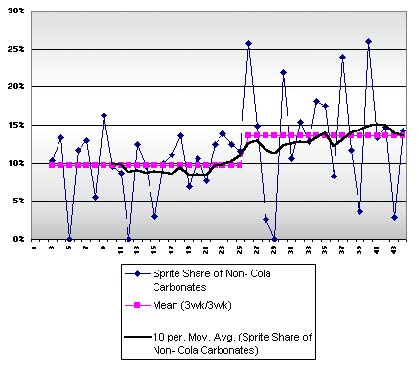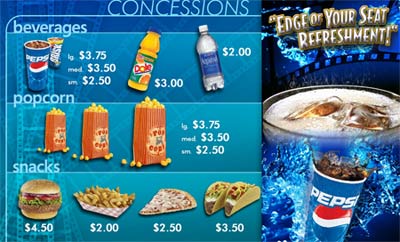News
Digital signage 101, part 3
In the final installment in this series, Scala's Jeff Porter examines the potential for digital signage in c-stores and entertainment venues.
September 18, 2005
A lot of people have tried digital signage in convenience stores and gas stations without much luck. C-stores are an impulse buyers' Mecca. So what went wrong? The first and foremost issue is "pay at the pump." People don't go into the store any more. Static signage and the little scrolling text display above the keypad in the pump just doesn't cut it. You need a nice screen. It needs to be big, full color, daylight viewable, and built for the outdoors. Add a little audio and you can start targeting your customers emotional buying patterns.
Of course, providing interesting and compelling content is important too, not just pure advertising. From the advertisers perspective, it would be really nice to know that someone is WATCHING the ads, so you had better have an interface to the pump. Finally, make sure that the things that are advertised on your screens are ACTUALLY FOR SALE at the C-store or gas station. Just don't go for the NGN "billboard approach" of "how many impressions did I get?" Limit the ads to only those that can satisfy the immediate gratification of the consumer. It's a c-store. That's what convenience is all about. Keep your loop time short enough that all ads are played during a normal fill-up, and measure your sales lift. Done.
To see the effectiveness of digital signage in a c-store, a study was done a few years ago where sales of Sprite (the product being advertised and measured) was compared against control store stores in the same city that did not have digital signage. The results were fascinating.
After gathering sales data for three weeks, screens were turned on in the stores with plasma screens and sales of Sprite shot up significantly (see chart on day 26). Then sales dropped off to zero a few days later. The store wasn't closed. They actually ran out of Sprite!! And the driver for Coke did not replenish until later. Over the remaining 3-week period, sales of Sprite were consistently higher than in stores without digital signage (and the results could have been even better if they were able to keep the product in stock).

Cinema is another interesting market in transition. A few years back, most of the major theatre chains were in bankruptcy. The entire industry was overbuilt. Phil Anschutz, of Quest Communications fame, purchased Regal, UA and Edwards Theatres along with NGN (remember the 7-Eleven network?) out of bankruptcy, and began to change the rules in cinema. Theatres were outfitted with medium-sized digital projectors and were placed next to each film projector. Each Cineplex was connected via satellite to each other, and voila, a new theatergoers experience was born. Gone are the cheesy 35mm slide shows before the movies begin. This was replaced by a nicely produced video pre-show program called "the 20wenty" featuring stars such as Jay Leno intermixed with advertising and promotions. Plasma screens could now be placed in the lobbies to drive concession sales and other promotions.
And, best of all, the movie theatre was just not for movies any more. Alternative media events could be held in these theatres such as simulcast rock concerts in high definition or pay-per-view sporting events. All of these alternative media events are "found money" for the theatre, which has turned the industry around. (OKÂ…that and a nice summer box office will do wonders!) Christie Digital has developed an entire turnkey solution for the cinema market to control on-screen advertising, in-lobby advertising as well as digital menu boards. The system completely automates the process of running the projection booth. Simply thread the film in the projector and press the "Start Show" button. First the low budget ads play on the digital projector. Then with five minutes before the feature starts, the high budget ads start (everyone is now in their seats!) Then automatically, the digital projector is turned off, and the film projector is turned on. At the end of the film, the digital projector is turned back on with the low budget ads. Of course, the same infrastructure controls the media in all other places in the theatre from interactive kiosks and trailers in the lobby to digital menu boards.
Digital menu boards are popping up in stadiums and arenas as well. Consider a stadium or arena that has different sporting events or concerts each night of the week. Do they sell beer at Disney on Ice? No way. Do they sell Gummi bears at the Hockey Game? Nope. So with all of these different events, you need a simple way to manage and promote the concessions: the digital menu board.

Digital menu boards can be scheduled to dynamically promote the correct mix of food and beverages at different prices for each event at the arena. The content can be centrally managed and scheduled in advance. The prices can be preset via the Web, or automatically linked to a POS system. Sponsorship can be sold to help pay for the infrastructure. The menus can easily be branded to coincide with the event, be it your favorite hockey team, basketball team or rock band. And with the newest state of the art LCD screens, you don't get burn in like plasma and the image quality is amazing.
I hope this series has opened your eyes to the possibilities with digital signage and motivated you to get involved with this exciting new industry.
(Read also part 1 and part 2 of this series.)
ABOUT THE AUTHOR
Jeff Porter is executive vice president of Scala, Inc., supplier of software solutions for dynamic signage networks. Mr. Porter has been employed by Scala in various capacities since 1994. Scala today has over 20,000 units deployed worldwide. Scala's InfoChannel 3 software suite is an off-the-shelf solution for dynamic signage networks and is in its third generation release. Prior to Scala, Commodore International Limited employed Mr. Porter, where he was responsible for worldwide product development of the Amiga computer from 1984 to 1994. He previously worked for AT&T Bell Labs and The Eastman Kodak Company. Mr. Porter holds a Masters degree in Engineering from the University of Illinois and a BSEE from Purdue University.










